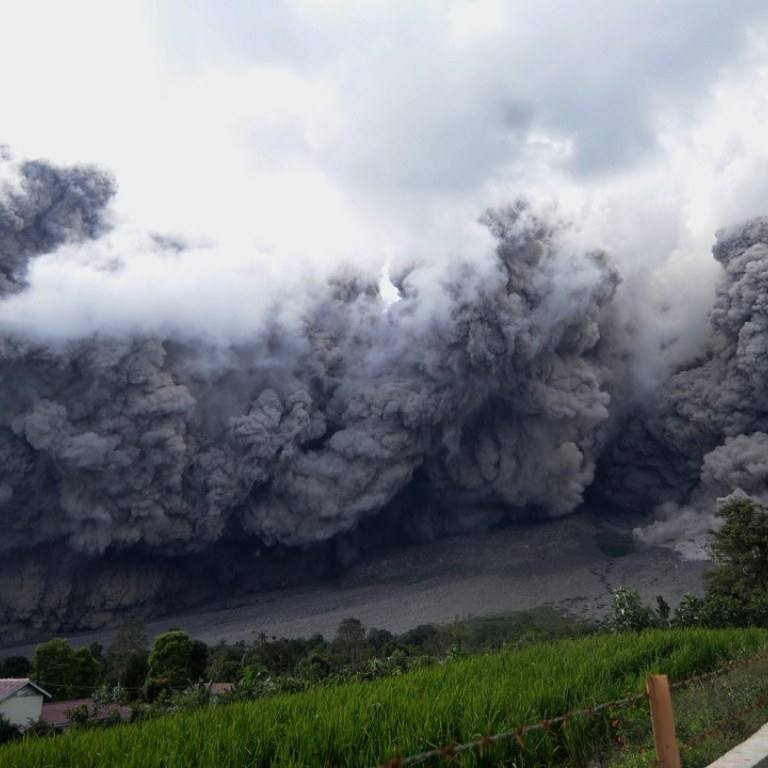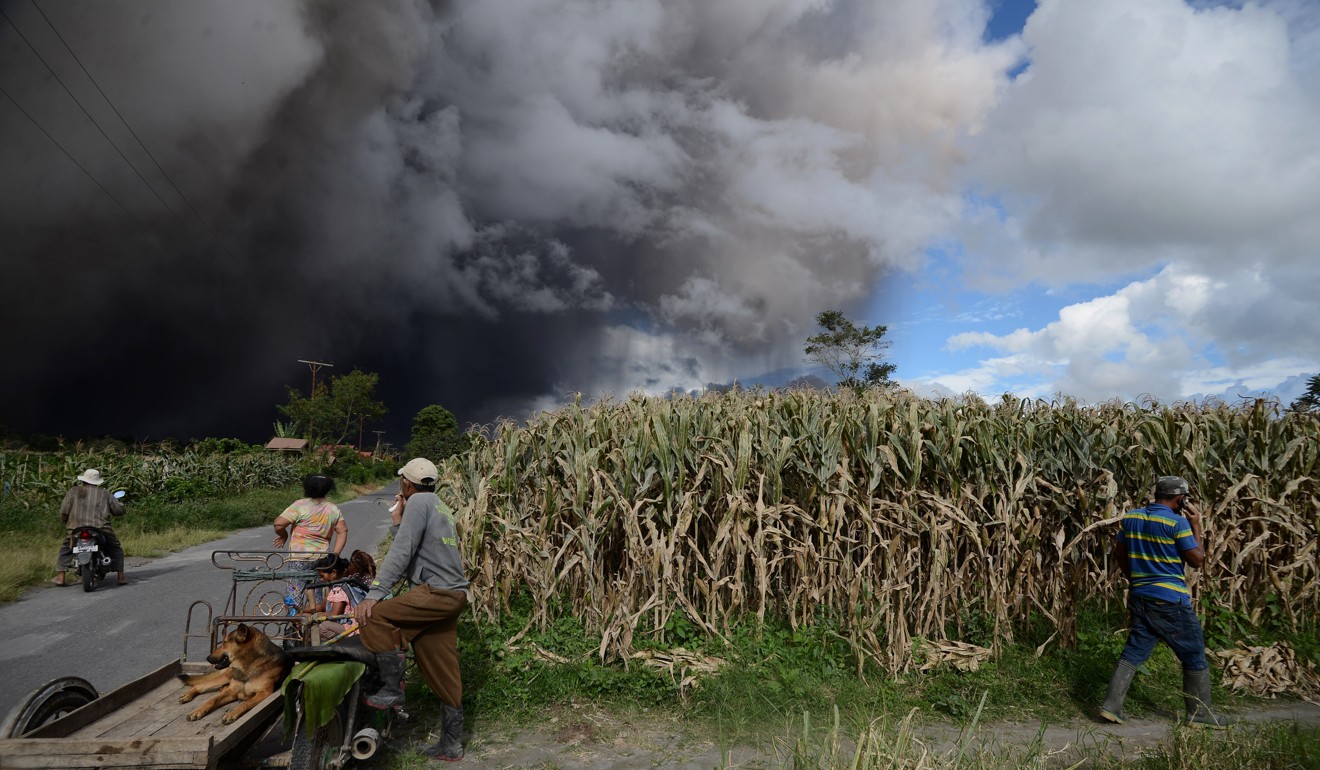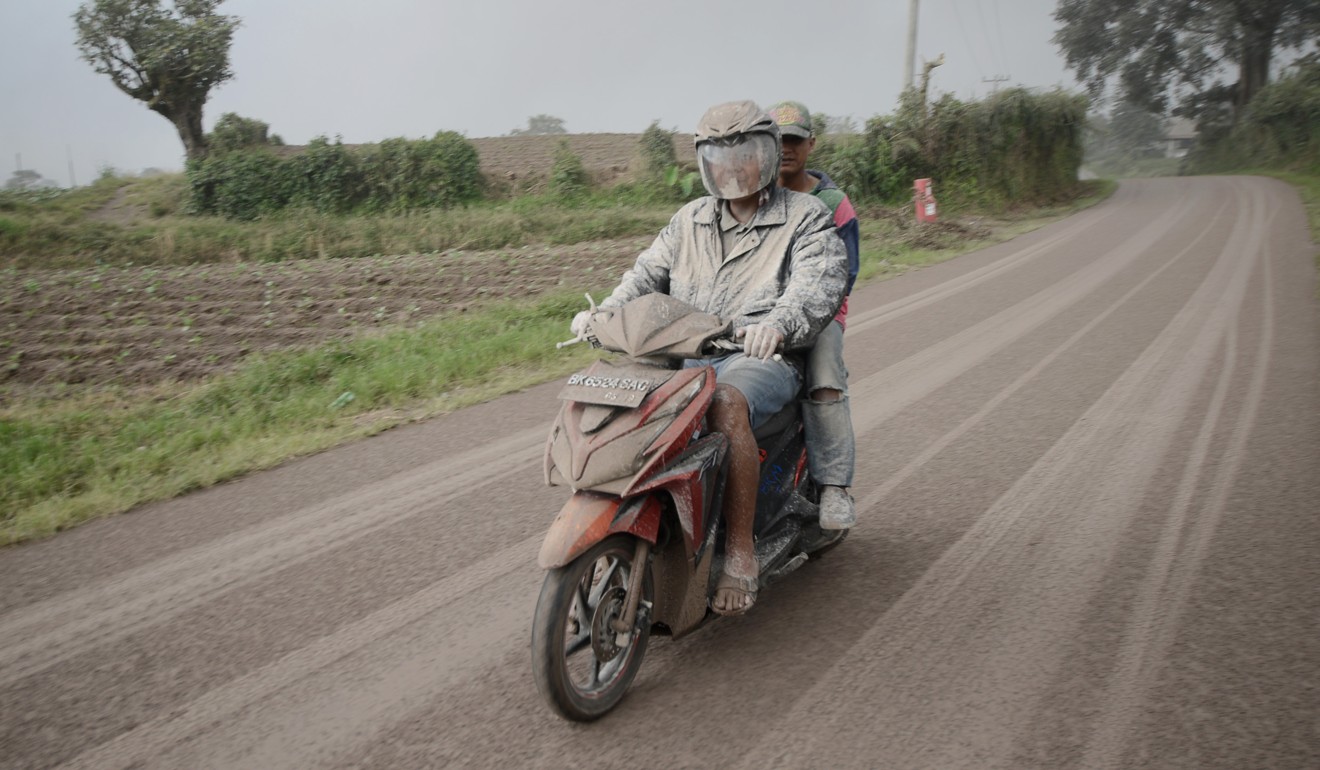
Indonesian volcano Mount Sinabung erupts again, sending clouds of ash and gas down its slopes
A highly active volcano on the Indonesian island of Sumatra has erupted again, sending searing hot clouds of gas and ash down its slopes, the country’s volcanology agency said.
The Centre for Volcanology and Geological Hazard Mitigation said the major eruption of Mt Sinabung, located in North Sumatra province, occurred at 3.36pm on Wednesday and lasted for 8 minutes. The spectacular eruption sent gas and ash almost 5km down its slopes and was its biggest eruption since August.
“Smoke and volcanic ash were spewed from the crater and the ash fell on several villages around Mt. Sinabung,” it said.
But no casualties were reported, according to the National Disaster Mitigation Agency.
“Nobody panicked because almost every day they see Mt Sinabung erupting,” the agency’s spokesman Sutopo Purwo Nugroho said, referring frequent smaller eruptions.
Local authorities, however, have warned people living near rivers on the slopes of the volcano to watch out for overflowing of rivers clogged with lahar, or cold lava, as it is now the rainy season.
In August 2010, the 2,460-metre volcano erupted for the first time in more than 400 years. After three years of inactivity, it erupted again in September 2013 and has remained highly active ever since.


All activities within 3km of the peak have been prohibited since authorities raised the volcano’s alert status to the highest level in 2015. Residents, however, had ignored the warning and returned to their villages to work at plantations.
More than 3,331 families affected by previous eruptions have been relocated.
Indonesia sits in one of the most active seismic regions in the world, the Pacific Ring of Fire in which a large number of earthquakes and volcanic eruptions occur.

